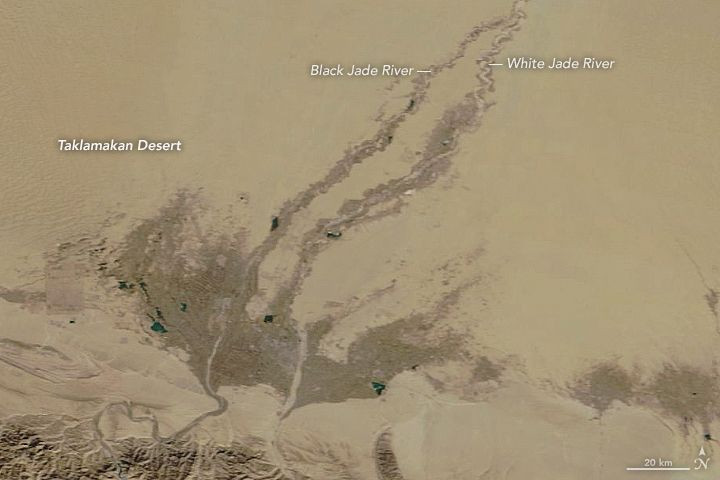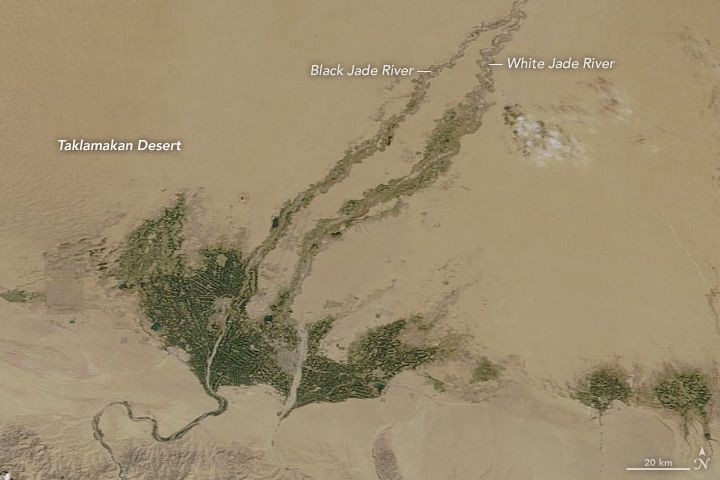NASA Satellite Image Shows Greenery In China's Taklamakan Desert
KEY POINTS
- A NASA satellite captured an image of greenery growing in China's warmest desert
- Taklamakan is nicknamed the 'Sea of Death'
- It is the second largest moving-sands desert in the world after the Sahara
A NASA satellite captured an image of greenery in China's Taklamakan Desert. Although it is considered the country’s hottest and driest desert, plants still sprout there in the spring.
NASA Earth Observatory shared two images of the Taklamakan Desert in China taken by the Moderate Resolution Imaging Spectrometer on the Terra satellite. One was taken Feb. 23, while the other was taken April 29.
The image from Feb. 23 shows a part of the desert by the oasis town of Hotan of what looks like small patches of green.

In the second image of the same area taken just a little over two months later, vegetation has already sprouted in the area, with a significant portion already covered in greenery.

Taklamakan can be roughly translated from the local Uygur language to "you go in, but you won't come out" and it is also nicknamed the "Sea of Death." The desert receives extremely low precipitation, ranging from 1.4 inches to 0.4 inch a year, and most of its water comes from the runoff from surrounding mountain ranges.
"For instance, spring and summer snowmelt from the Kunlun Mountains (seen at the bottom of the images) helps fill the White Jade and Black Jade Rivers, which in turn provide water for vegetation and the town of Hotan," NASA Earth Observatory explained.
Plants may be found in some parts of the desert where ground water is no deeper than 10 to 15 feet from the surface, but these often do not spread wide because of the thick, moving sand. Most of the desert, however, is free of vegetation. The only parts that have richer vegetation are those along the edges, closer to the river valleys and deltas.
Similarly, there is also very little animal life in Taklamakan. However, there are parts with water and vegetation where animals such as gazelles, wild boars rabbits, hedgehogs and foxes reside. Tigers also used to roam the area until the beginning of the 20th century but they have since been eliminated.
Taklamakan is about the size of Germany, making it China’s largest desert and the second largest moving-sands desert in the world after the Sahara in north Africa. It is also the home of the world's longest desert highway, the Tarim Desert Highway, around which workers have been planting more vegetation in recent years in an effort to protect it from sand storms.
© Copyright IBTimes 2024. All rights reserved.






















